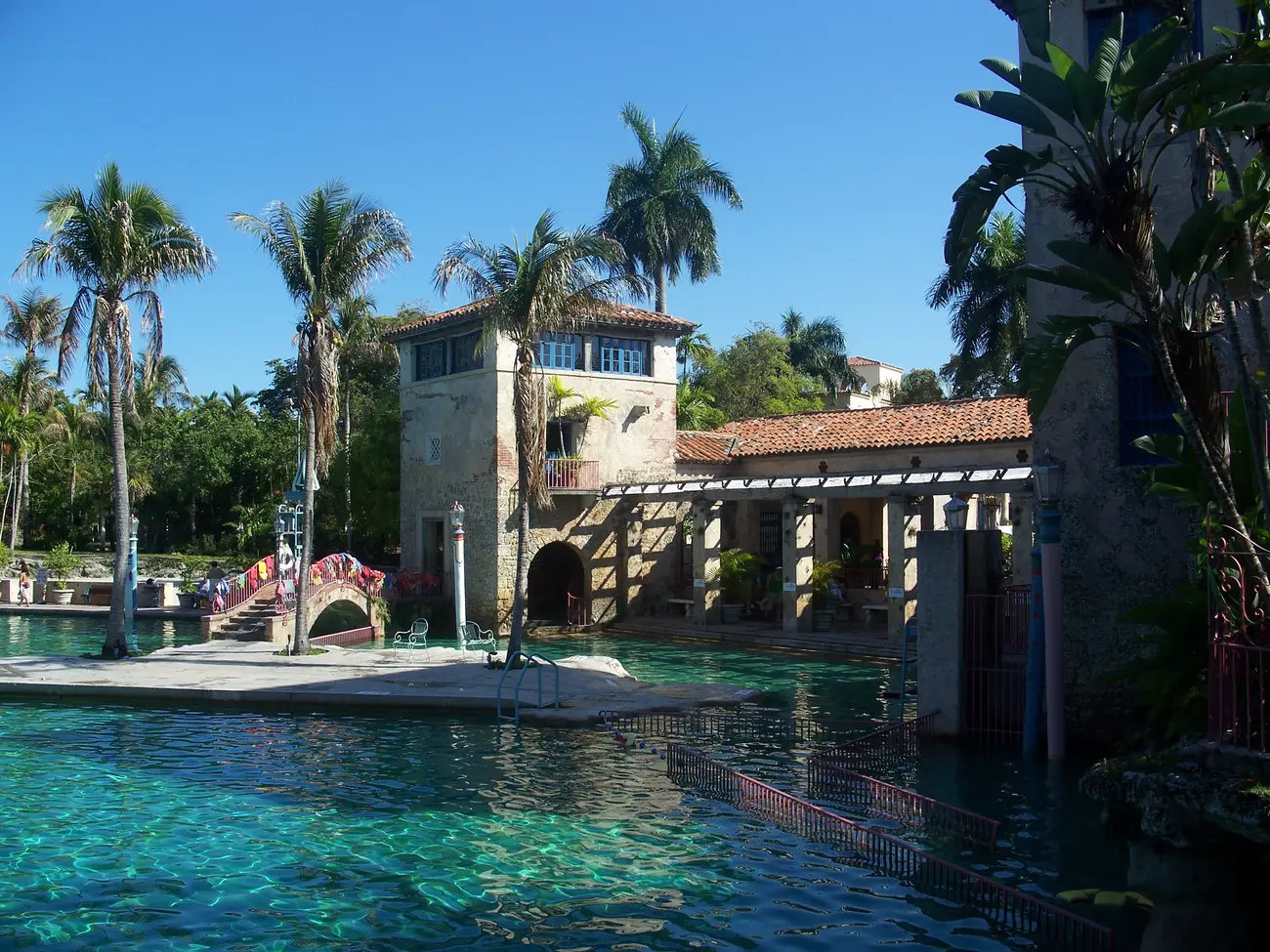The beautifully landscaped streets of Coral Gables are lined with Mediterranean style buildings that have become a preferred form of Florida architecture. The affluent Miami suburb is recognized as an iconic planned community.
Coral Gables was the vision of George Merrick, who in the 1920s transformed his family’s citrus grove into a community that included what was then middle class housing, public recreational facilities such as the Venetian Pool, trolley transportation, the Biltmore Hotel, and an educational institution that would become the University of Miami.
Miami historian Arva Moore Parks has spent decades working to preserve the Coral Gables community. She is author of the award-winning book “George Merrick: Son of the Southwind, Visionary Creator of Coral Gables,” published by University Press of Florida.
“I moved into Coral Gables in 1970, and bought an old beat up house, and everybody thought I was crazy,” says Parks. She soon found herself leading the first Historic Preservation Board in South Florida. “That’s when I started learning about Coral Gables. When we worked to save the Merrick House, I got to know Richard Merrick, who was George Merrick’s youngest brother. His wife Mildred was a librarian at UM, who I’d known for a long time. About ten years ago she said ‘I have some material no one’s ever seen,’ and that is what prompted the writing of the book.”
Parks was given exclusive access to primary source documents including personal letters, notes about Coral Gables, and short stories written by George Merrick.
Parks found the short stories particularly intriguing. “I recognized immediately that they were eyewitness accounts, because he was 13 when he came here,” says Parks. “He fictionalized what he witnessed. Sometimes he changed the names, but I could recognize who he was talking about.”
In 1899, George Merrick’s family moved from Duxbury, Massachusetts to Miami, Florida, to participate in the citrus industry. The pioneering spirit of his family helped to inspire the 13 year old.
“When he got here, everybody had to learn,” says Parks. “His father and mother were both college graduates and they moved into the back country into an old homestead, because his father wanted to leave the ministry and raise grapefruit. They became pioneers, but they had a very different background. They were intellectual college graduates in an era when there weren’t a lot of those around.”
As a young man, George Merrick dreamed of transforming his family’s land into a beautiful, planned community. His goal was to create an affordable place to live with public infrastructure to benefit residents.
“He was very visual and he read all the time,” says Parks. “He loved Washington Irving’s ‘Alhambra’ and that’s where he got a lot of ideas.”
While attending college in New York, Merrick lived with his mother’s brother, Denman Fink, who was an illustrator and artist. The two began discussing the possibilities for a planned community with architectural controls. After continuing his college education at Rollins College in Winter Park, Florida, Merrick returned to South Florida.
Merrick assembled a team that included his cousin George Fink who was an architect, and Frank Button who was a landscape architect working nearby for the Deering family. Together they designed the original plan for Coral Gables. The team planted more than 30,000 trees to augment the Mediterranean style architecture of the community.
The Florida Land Boom of the 1920s was followed by a bust, and then the Great Depression. George Merrick lost his fortune.
“He was literally thrown out in 1928,” says Parks. “They had created a city and he was on the commission, but he was having some health problems. They threw him off the commission because he missed too many meetings.”
As the Great Depression hit, Merrick’s properties were being foreclosed and he never recovered financially. In 1940, he was able to become Post Master, and was very popular in the position. At his death in 1942, Merrick’s estate was worth less than $400.
Merrick’s legacy lives on in the community of Coral Gables.
“It’s been very successful,” says Parks. “The values have gone up. I think people realize that it is the architectural controls more than anything else, that have kept the feeling in Coral Gables today.”

